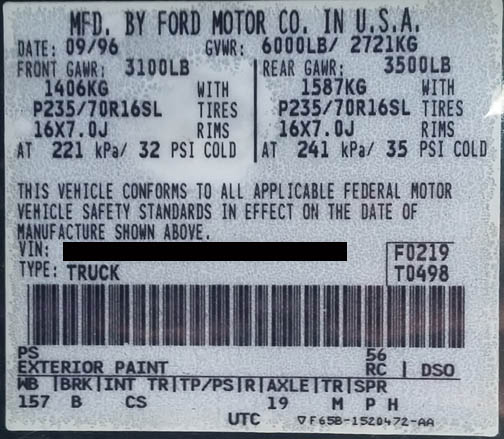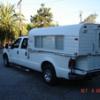Thanks PackRat and Rusty! Yeah, the blue appliances really surprised me ~ I'v never seen that color before, either, especially in a rig of this age.
So, I've been trying to read up on the GVWR and payload thing. I found this:
http://www.ford-truc...d-capacity.html
But they're talking about paying an extra registration fee in some states to get a truck rated for a higher payload? I understand why the state might want to charge extra for a heavier vehicle, but how does the fee make it safe to operate the truck with more payload?? Is the rating really that arbitrary, or are they kind of saying "you can carry more but you'll pay for it eventually"? I took a shot of my door sticker:

Am I reading this correctly that my truck is only rated for 600 lbs.? My mechanic says that I should be good and safe up to about 1500, but I have no idea where he's getting that number. Yes, the truck is sposed to be a 1/2 ton. I have used it in the past to tow a 24 foot Boles Aero about 300 miles and it didn't bat an eyelash. As far as the Alaskan, I have not driven it extensively, but it sits well and doesn't feel overburdened. I know the former owner of this truck used it now and then for some fairly heavy hauling, but I don't know if anything nonstock was added. Advice?
Thanks again for all the great info. I am reading up on the forum, trying to absorb as much as possible. If I ask a quesiton that has been answered elsewhere, just point me in the right direction or tell me what to search for. I appreciate it!
Jo
Edited by Grrlartist, 13 January 2017 - 01:51 AM.















